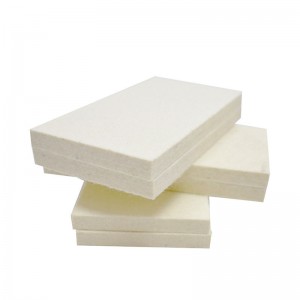The global market for wool felt strips is experiencing dynamic growth, driven by factors such as increasing consumer demand for sustainable products, the rise of the DIY culture, and the expanding applications of wool felt in various industries. As this market evolves, businesses and manufacturers are facing new opportunities and challenges that are shaping the future of wool felt strip production and distribution.
One of the major drivers of the growth in the wool felt strip market is the growing consumer preference for eco – friendly materials. With increasing awareness about environmental issues, consumers are actively seeking out products made from natural and sustainable resources. Wool felt, being a renewable and biodegradable material, has gained significant popularity. This trend is evident across multiple sectors, from fashion and home decor to industrial applications, where companies are incorporating wool felt strips into their products to meet the demand for sustainable options.
The rise of the DIY culture has also had a profound impact on the market for wool felt strips. Online platforms and social media have played a crucial role in inspiring and empowering DIY enthusiasts around the world. Tutorials, blogs, and videos showcasing creative projects using wool felt strips have attracted a large following, leading to an increased demand for the material. Craft stores and online retailers are responding by expanding their offerings of wool felt strips in a wide range of colors, thicknesses, and qualities to cater to the diverse needs of DIYers.
In terms of geographical distribution, the market for wool felt strips is expanding globally. While traditional markets in Europe and North America continue to be significant consumers, emerging markets in Asia, particularly China and India, are showing strong growth potential. The growing middle – class population in these regions, along with increasing awareness of sustainable and handmade products, is driving the demand for wool felt strips.
However, the global wool felt strip market also faces several challenges. One of the key challenges is ensuring a consistent supply of high – quality wool. Fluctuations in wool production, influenced by factors such as climate change, disease outbreaks among sheep, and changes in farming practices, can impact the availability and quality of wool used for felt production. Additionally, competition from synthetic alternatives, although less sustainable, can pose a threat, especially in price – sensitive segments of the market.
To overcome these challenges, manufacturers and businesses are adopting various strategies. Some are investing in research and development to improve the production processes of wool felt strips, enhancing their quality and efficiency. Others are establishing direct partnerships with wool farmers to ensure a stable supply of raw materials and promote sustainable farming practices. Branding and marketing efforts are also crucial, as companies strive to differentiate their wool felt strip products in a crowded market by highlighting their unique features, such as eco – friendliness, versatility, and high quality.
As the global market for wool felt strips continues to evolve, the industry is likely to witness further innovation, expansion, and collaboration. By capitalizing on the opportunities presented by changing consumer trends and addressing the associated challenges, the wool felt strip market is poised for a promising future in the global economy.

Post time: Jun-04-2025
